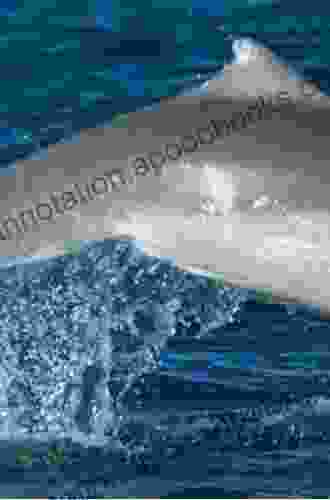Dive into the Realm of Mathematical Elegance: An Introduction to Partial Differential Equations

Embarking on a Journey through the Intricacies of PDEs
 Partial differential equations (PDEs) stand as formidable tools, unlocking the mysteries of diverse phenomena across the physical, biological, and technological realms. Their mastery empowers scientists, engineers, and mathematicians alike in deciphering complex behaviors and predicting future outcomes.
Partial differential equations (PDEs) stand as formidable tools, unlocking the mysteries of diverse phenomena across the physical, biological, and technological realms. Their mastery empowers scientists, engineers, and mathematicians alike in deciphering complex behaviors and predicting future outcomes.
4.8 out of 5
| Language | : | English |
| File size | : | 17806 KB |
| Screen Reader | : | Supported |
| Print length | : | 360 pages |
Delving into the Conceptual Foundations
Origins and Evolution
The origins of PDEs trace back to the 18th century, when mathematicians sought to describe the propagation of sound waves. Over time, their applications extended to fields as vast as fluid dynamics, heat transfer, and quantum mechanics.
Mathematical Formulation
At their core, PDEs express the relationship between a function and its partial derivatives across multiple variables. This mathematical language enables researchers to model diverse physical processes, from the flow of fluids to the diffusion of heat.
Classifying PDEs
The vast landscape of PDEs is categorized into various types, each possessing distinct characteristics and complexities. Among the most prevalent are:
- Elliptic PDEs
- Parabolic PDEs
- Hyperbolic PDEs
Exploring Diverse Applications
Fluid Dynamics
PDEs play a pivotal role in simulating and predicting fluid flow patterns, aiding in the design of efficient aircraft and spacecraft.
Heat Transfer
From thermal insulation to nuclear reactor design, PDEs provide vital insights into heat transfer phenomena.
Quantum Mechanics
PDEs form the backbone of quantum mechanics, enabling the analysis of wave functions and the prediction of atomic and subatomic behavior.
Biological Modeling
In the realm of biology, PDEs facilitate the modeling of population dynamics, disease spread, and the intricate processes within living organisms.
Unveiling Numerical Techniques
Analytical Solutions
While some PDEs yield to analytical solutions, most require numerical approximations. These techniques approximate the solution using finite difference, finite element, or finite volume methods.
Computational Tools
Advanced software packages, such as MATLAB and COMSOL, empower researchers with potent tools for solving complex PDEs and visualizing their solutions.
Navigating the Text: A Comprehensive Guide
Chapter Organization
The book " to Partial Differential Equations" meticulously unfolds the subject in a systematic and engaging manner. Each chapter delves into a specific aspect of PDEs, gradually building upon the foundational concepts.
Chapter Summaries
Concise chapter summaries provide a valuable recap of key points, reinforcing understanding and aiding in retention.
Practice Exercises
Numerous practice exercises throughout the chapters challenge readers to apply the concepts they have learned, fostering a deeper grasp of the material.
Embracing the Potential of PDEs
Career Opportunities
Mastery of PDEs opens doors to a wide array of rewarding careers in research, academia, and industry.
Research Advancements
PDEs continue to fuel groundbreaking research across scientific disciplines, pushing the boundaries of our knowledge and driving technological progress.
Educational Enrichment
The study of PDEs enriches one's mathematical prowess, fostering analytical thinking and problem-solving abilities.
Embarking on a journey through " to Partial Differential Equations" is an investment in understanding the language of mathematical modeling. Its systematic approach, accessible explanations, and practical examples empower learners to unravel the complexities of physical, biological, and technological systems. With this newfound knowledge, readers are equipped to contribute to the advancement of science and engineering, unlocking the boundless potential of partial differential equations.
Free Download your copy of " to Partial Differential Equations" and embark on an enlightening journey into the intricate world of mathematical elegance.
4.8 out of 5
| Language | : | English |
| File size | : | 17806 KB |
| Screen Reader | : | Supported |
| Print length | : | 360 pages |
Do you want to contribute by writing guest posts on this blog?
Please contact us and send us a resume of previous articles that you have written.
 Book
Book Novel
Novel Page
Page Chapter
Chapter Text
Text Story
Story Genre
Genre Reader
Reader Library
Library Paperback
Paperback E-book
E-book Magazine
Magazine Newspaper
Newspaper Paragraph
Paragraph Sentence
Sentence Bookmark
Bookmark Shelf
Shelf Glossary
Glossary Bibliography
Bibliography Foreword
Foreword Preface
Preface Synopsis
Synopsis Annotation
Annotation Footnote
Footnote Manuscript
Manuscript Scroll
Scroll Codex
Codex Tome
Tome Bestseller
Bestseller Classics
Classics Library card
Library card Narrative
Narrative Biography
Biography Autobiography
Autobiography Memoir
Memoir Reference
Reference Encyclopedia
Encyclopedia Tarah Benner
Tarah Benner Clare Clark
Clare Clark Lydia Goehr
Lydia Goehr Erika Pitstick
Erika Pitstick Jorge Lozano
Jorge Lozano Claudette Kulkarni
Claudette Kulkarni Sarah Skeate
Sarah Skeate Cherie Wood
Cherie Wood Christine Mann
Christine Mann Charlotte Schwartz
Charlotte Schwartz Mounira M Charrad
Mounira M Charrad Ian F Svenonius
Ian F Svenonius Michelle Rawlins
Michelle Rawlins Richard Kozul Wright
Richard Kozul Wright Christopher M Finan
Christopher M Finan Dr Anita Bhandari
Dr Anita Bhandari Jenny Dean
Jenny Dean Clarence G Hamilton
Clarence G Hamilton Joseph Walsh
Joseph Walsh Thankgod Adoyi Ocheme
Thankgod Adoyi Ocheme
Light bulbAdvertise smarter! Our strategic ad space ensures maximum exposure. Reserve your spot today!

 Arthur C. ClarkeDead Girl Walking: The Jack Parlabane Thriller That Will Haunt Your Thoughts
Arthur C. ClarkeDead Girl Walking: The Jack Parlabane Thriller That Will Haunt Your Thoughts
 Ernesto SabatoYorkie Training Care 24 Secrets: The Ultimate Guide to a Happy and Healthy...
Ernesto SabatoYorkie Training Care 24 Secrets: The Ultimate Guide to a Happy and Healthy... Troy SimmonsFollow ·17.9k
Troy SimmonsFollow ·17.9k Allen ParkerFollow ·10.6k
Allen ParkerFollow ·10.6k Isaiah PowellFollow ·16.1k
Isaiah PowellFollow ·16.1k Felix HayesFollow ·10.2k
Felix HayesFollow ·10.2k Gus HayesFollow ·5.8k
Gus HayesFollow ·5.8k Jorge AmadoFollow ·9k
Jorge AmadoFollow ·9k Kenneth ParkerFollow ·9.5k
Kenneth ParkerFollow ·9.5k Jaylen MitchellFollow ·5.8k
Jaylen MitchellFollow ·5.8k

 Kevin Turner
Kevin TurnerDive into the Enchanting World of "Crazy Like Fox": A...
Prepare yourself for a literary adventure...

 Ralph Waldo Emerson
Ralph Waldo EmersonUnlock the Elegance of Daffodil Lace: An Immersive Guide...
: A Tapestry of Delicate...

 Gerald Parker
Gerald ParkerNever Lose An Argument Again: 20 Powerful Techniques From...
Are you tired of losing...

 Xavier Bell
Xavier BellSeven Animal Insertions Filet Crochet Pattern: Embark on...
Welcome to the captivating...

 Eugene Powell
Eugene PowellMagomago in TDS Magomago 12: An Unforgettable Adventure...
Step into the Enchanting World of...

 Marvin Hayes
Marvin HayesSoft Felting Needle Holder Excellence In Reborn Artistry
Unveiling the Secrets of the...
4.8 out of 5
| Language | : | English |
| File size | : | 17806 KB |
| Screen Reader | : | Supported |
| Print length | : | 360 pages |







